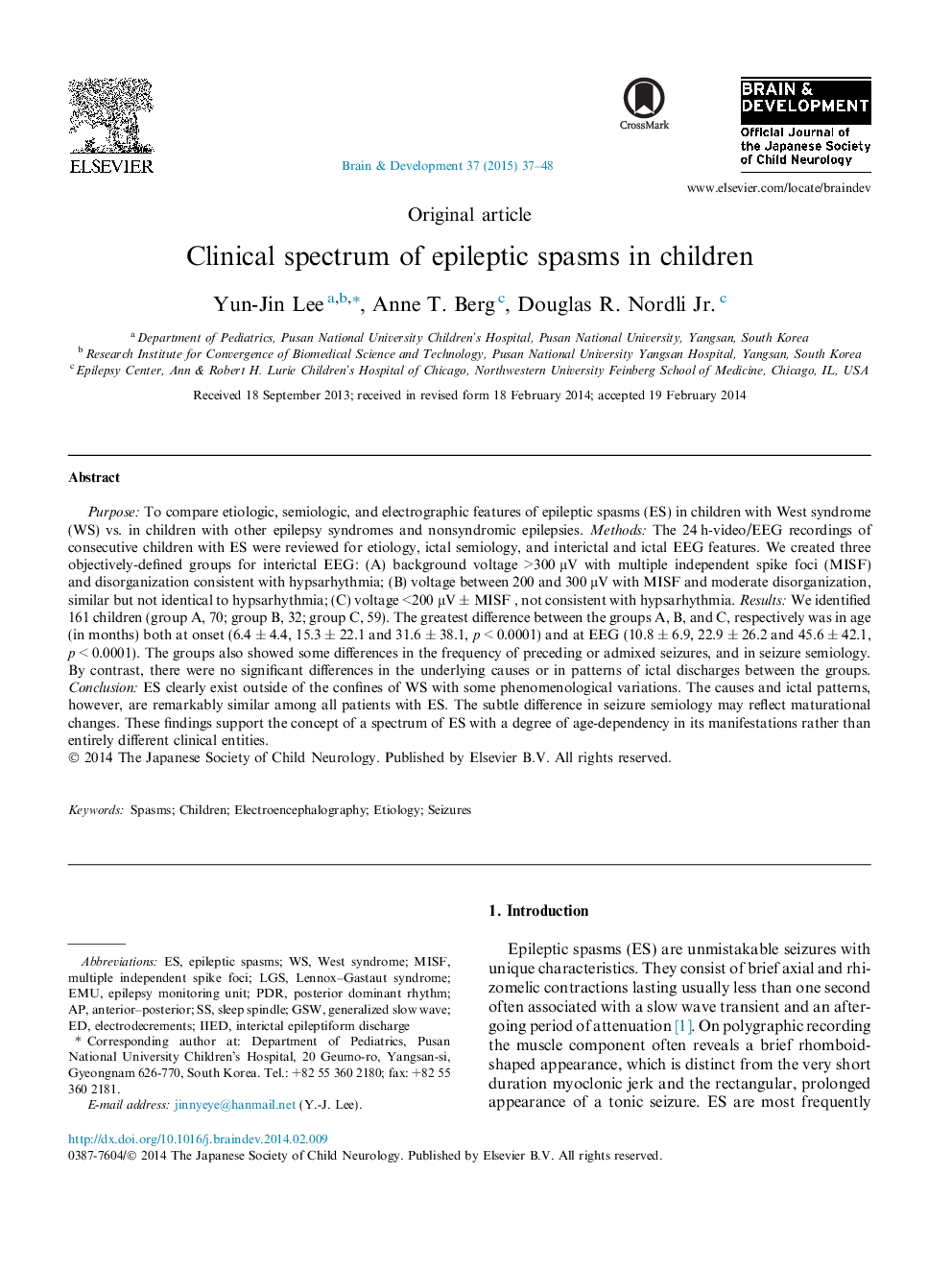| Article ID | Journal | Published Year | Pages | File Type |
|---|---|---|---|---|
| 3036680 | Brain and Development | 2015 | 12 Pages |
Purpose: To compare etiologic, semiologic, and electrographic features of epileptic spasms (ES) in children with West syndrome (WS) vs. in children with other epilepsy syndromes and nonsyndromic epilepsies. Methods: The 24 h-video/EEG recordings of consecutive children with ES were reviewed for etiology, ictal semiology, and interictal and ictal EEG features. We created three objectively-defined groups for interictal EEG: (A) background voltage >300 μV with multiple independent spike foci (MISF) and disorganization consistent with hypsarhythmia; (B) voltage between 200 and 300 μV with MISF and moderate disorganization, similar but not identical to hypsarhythmia; (C) voltage <200 μV ± MISF , not consistent with hypsarhythmia. Results: We identified 161 children (group A, 70; group B, 32; group C, 59). The greatest difference between the groups A, B, and C, respectively was in age (in months) both at onset (6.4 ± 4.4, 15.3 ± 22.1 and 31.6 ± 38.1, p < 0.0001) and at EEG (10.8 ± 6.9, 22.9 ± 26.2 and 45.6 ± 42.1, p < 0.0001). The groups also showed some differences in the frequency of preceding or admixed seizures, and in seizure semiology. By contrast, there were no significant differences in the underlying causes or in patterns of ictal discharges between the groups. Conclusion: ES clearly exist outside of the confines of WS with some phenomenological variations. The causes and ictal patterns, however, are remarkably similar among all patients with ES. The subtle difference in seizure semiology may reflect maturational changes. These findings support the concept of a spectrum of ES with a degree of age-dependency in its manifestations rather than entirely different clinical entities.
